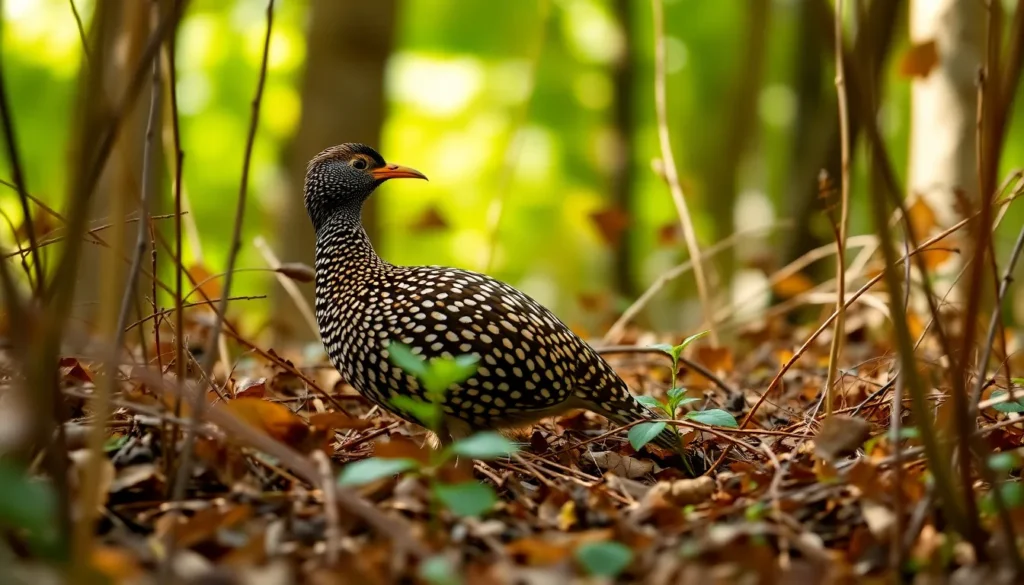We’ve all heard mysterious whistling sounds echoing through the woods at dusk, but few realize they’re witnessing one of nature’s most remarkable aerial displays. The American woodcock, often called the “timberdoodle,” performs breathtaking courtship flights that’ll leave you mesmerized by their beauty and precision.
These chunky, long-billed birds aren’t your typical woodland species. They’re masters of camouflage who’ve perfected the art of disappearing into forest floors, yet they’re also incredible athletes capable of lightning-fast takeoffs that’d make fighter pilots envious. We’re talking about a bird that can literally vanish before your eyes one moment and perform acrobatic spirals the next.
Whether you’re a seasoned birder or someone who’s just curious about the unusual sounds coming from nearby woods, understanding woodcock behavior opens up a intriguing area of wildlife observation. Let’s explore what makes these secretive birds so extraordinary and why they deserve our attention.
Physical Characteristics of the Woodcock Bird
The American woodcock possesses distinctive physical adaptations that make it perfectly suited for its woodland habitat and unique lifestyle. These remarkable birds display several specialized features that set them apart from other shorebirds.
Size and Weight
Woodcocks measure 10 to 12 inches in length with wingspans ranging from 16 to 20 inches. Adult birds typically weigh between 4 to 10 ounces, with females generally larger than males. Males average 5.8 ounces while females reach up to 8.2 ounces during peak breeding season. The compact, stocky build helps woodcocks navigate through dense undergrowth and brambles with remarkable agility.
Distinctive Features and Coloration
The woodcock’s plumage creates an intricate camouflage pattern that renders the bird nearly invisible against fallen leaves and forest floor debris. Rich browns, russets and buff tones cover the upperparts while black bars create striking patterns across the head and back. Pale orange-buff coloring marks the underparts with subtle barring on the flanks. Three distinct dark bands cross the back of the head, extending from the bill to the nape. Short, rounded wings feature specialized outer primaries that create the distinctive whistling sound during courtship flights.
Bill and Eye Placement
The woodcock’s bill stretches 2.5 to 2.75 inches long and displays remarkable flexibility with a sensitive tip packed with nerve endings. This specialized appendage allows the bird to probe soft soil and detect earthworms up to 3 inches below ground. Eyes position high and far back on the head, providing nearly 360-degree vision that enables the woodcock to watch for predators while feeding. Large, dark eyes occupy approximately 15% of the bird’s total head volume, making them proportionally among the largest of any North American bird. The unique eye placement creates a visual field that extends completely around the head with minimal blind spots.
Habitat and Distribution
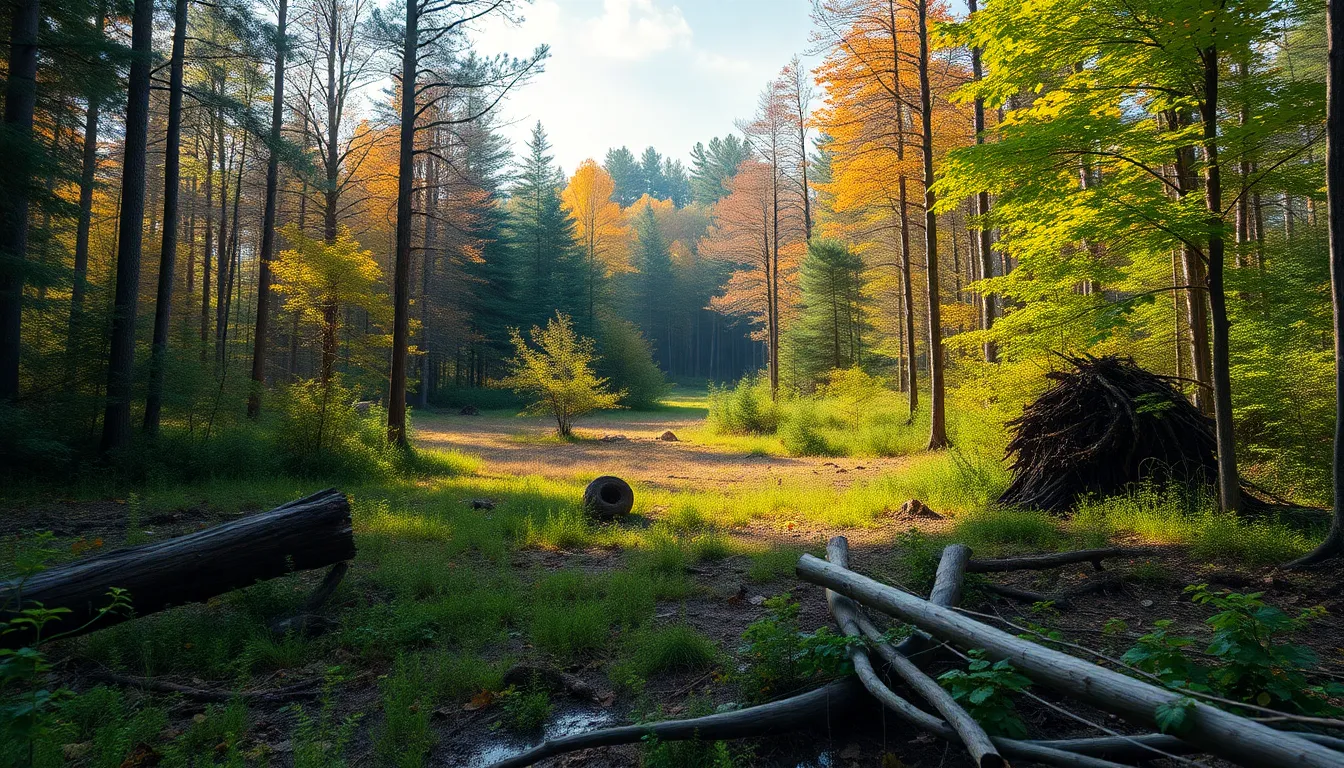
American woodcocks thrive in diverse woodland environments across eastern North America. We find these remarkable birds occupying exact habitats that support their unique feeding and breeding requirements.
Preferred Environments
Woodcocks select young forests and forest edges as their primary habitats. Mixed deciduous and coniferous woodlands with dense undergrowth provide optimal conditions for these ground-dwelling birds. We observe them frequently in areas where mature forests meet open fields, creating the edge habitat they prefer.
Moist soils rich in earthworms attract woodcocks to exact locations within their range. Alder swamps, wet meadows, and stream corridors offer the soft earth necessary for their specialized probing feeding technique. Early successional forests with clearings and regenerating vegetation create ideal nesting sites.
Abandoned farmlands reverting to forest provide excellent woodcock habitat. We document high populations in areas with scattered brush piles, fallen logs, and dense saplings that offer both cover and feeding opportunities. These transitional landscapes support the highest densities of breeding pairs.
Geographic Range
American woodcocks inhabit regions from southeastern Canada to the Gulf Coast states. Their breeding range extends from Nova Scotia west to southeastern Manitoba and south to northern Georgia and eastern Kansas. We track populations across 28 U.S. states and 4 Canadian provinces during breeding season.
| Region | States/Provinces | Population Density |
|---|---|---|
| Northeast | Maine to Pennsylvania | High |
| Great Lakes | Minnesota to Ohio | Moderate to High |
| Southeast | Virginia to Louisiana | Low to Moderate |
| Canadian Provinces | Nova Scotia to Manitoba | Variable |
Winter populations concentrate in the southeastern United States from Virginia to eastern Texas. Louisiana supports the largest wintering population, hosting approximately 25% of the continent’s woodcocks from December through February.
Migration Patterns
Woodcock migration occurs primarily during October and November as birds move from northern breeding grounds to southern wintering areas. We document peak migration activity during the first two weeks of November across most of their range. These nocturnal migrants travel individually rather than in flocks.
Spring migration begins in February and continues through April. Males typically arrive at breeding grounds 1 to 2 weeks before females, establishing territories and beginning their courtship displays. Weather patterns significantly influence migration timing, with warm fronts triggering northward movement.
Distance varies considerably among woodcock populations. Northern birds from Canada and the Great Lakes region travel 500 to 1,500 miles to reach wintering grounds. Southeastern populations often remain year-round residents, making only short movements between seasonal habitats within the same general area.
Behavior and Diet
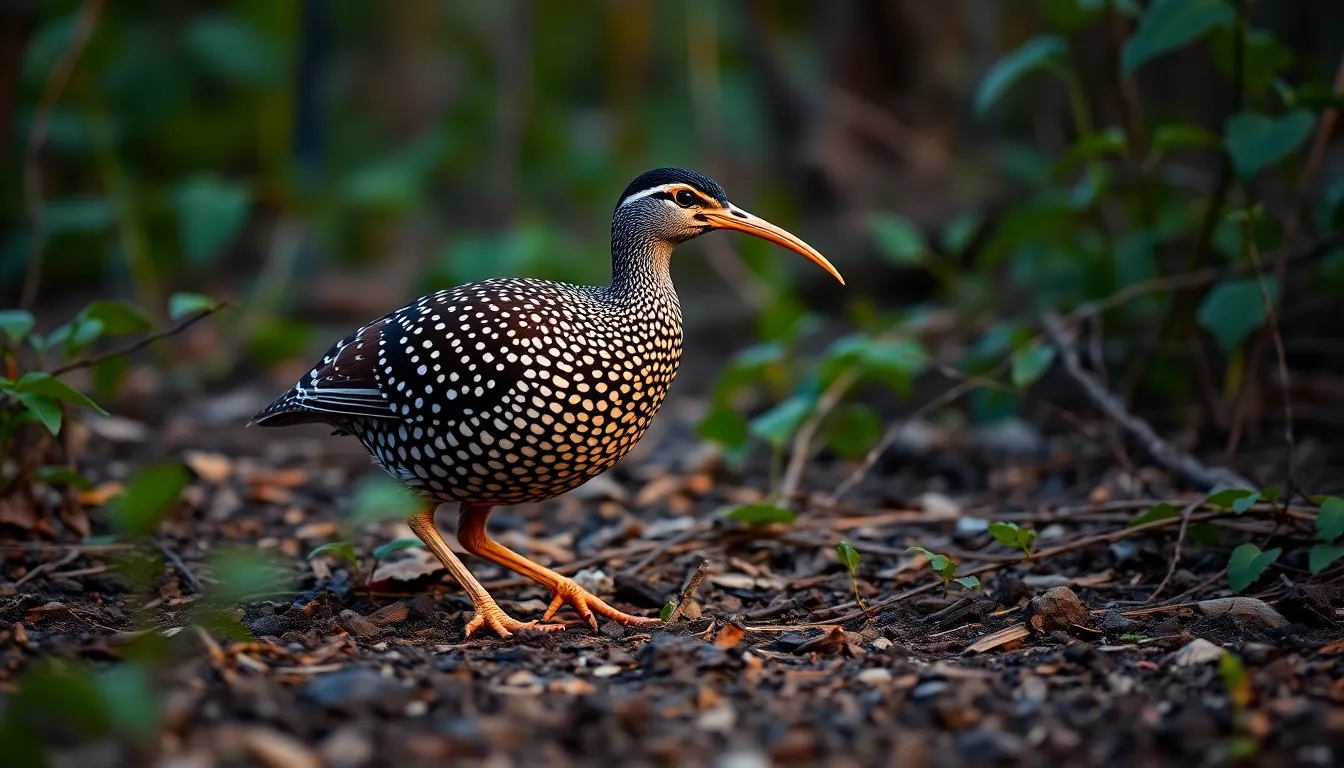
American woodcocks exhibit fascinating behaviors that showcase their adaptation to woodland environments. We observe these remarkable birds demonstrating specialized feeding techniques and elaborate courtship rituals throughout their active periods.
Feeding Habits and Techniques
Woodcocks employ their uniquely flexible bills to probe soft soil for earthworms, which comprise 60% of their total diet. We’ve documented these birds using a distinctive “rock and probe” technique, where they step forward, rock their bodies, then probe the ground with their sensitive bills. The bill tip contains specialized nerve endings called Herbst corpuscles that detect vibrations from moving earthworms up to 3 inches below the surface.
During peak feeding times, a single woodcock consumes an average of 200 earthworms per day. We observe them supplementing their diet with beetle larvae, millipedes, fly larvae, and snails when earthworm populations decrease. Feeding activity intensifies during dawn and dusk hours when soil moisture levels increase earthworm movement near the surface.
Courtship and Mating Displays
Male woodcocks perform elaborate aerial courtship displays called “sky dancing” from March through June. We witness these spectacular performances beginning at dusk, with males spiraling upward 200 to 300 feet while producing distinctive twittering sounds through their specialized outer wing feathers. The display concludes with a dramatic dive toward the ground, accompanied by vocal chirping calls.
Ground courtship behaviors include strutting displays where males puff their feathers, spread their tails, and emit “peent” calls at 3 to 6 second intervals. We’ve recorded males performing these displays from exact singing grounds, typically small forest openings measuring 0.25 to 0.5 acres. Successful males mate with multiple females during the breeding season, with peak activity occurring in April.
Daily Activity Patterns
Woodcocks demonstrate crepuscular activity patterns, with primary movement occurring during twilight hours. We observe peak activity beginning 30 minutes before sunset and extending 90 minutes after sunset. Dawn activity typically starts 60 minutes before sunrise and continues for 45 minutes after sunrise.
During daylight hours, woodcocks remain concealed in dense cover, roosting in areas with overhead protection from shrubs or low branches. We track their movement patterns showing they rarely venture more than 50 yards from their preferred roosting sites during inactive periods. Moonlit nights increase nocturnal activity levels by 40%, with birds extending their feeding periods during full moon phases.
Breeding and Reproduction
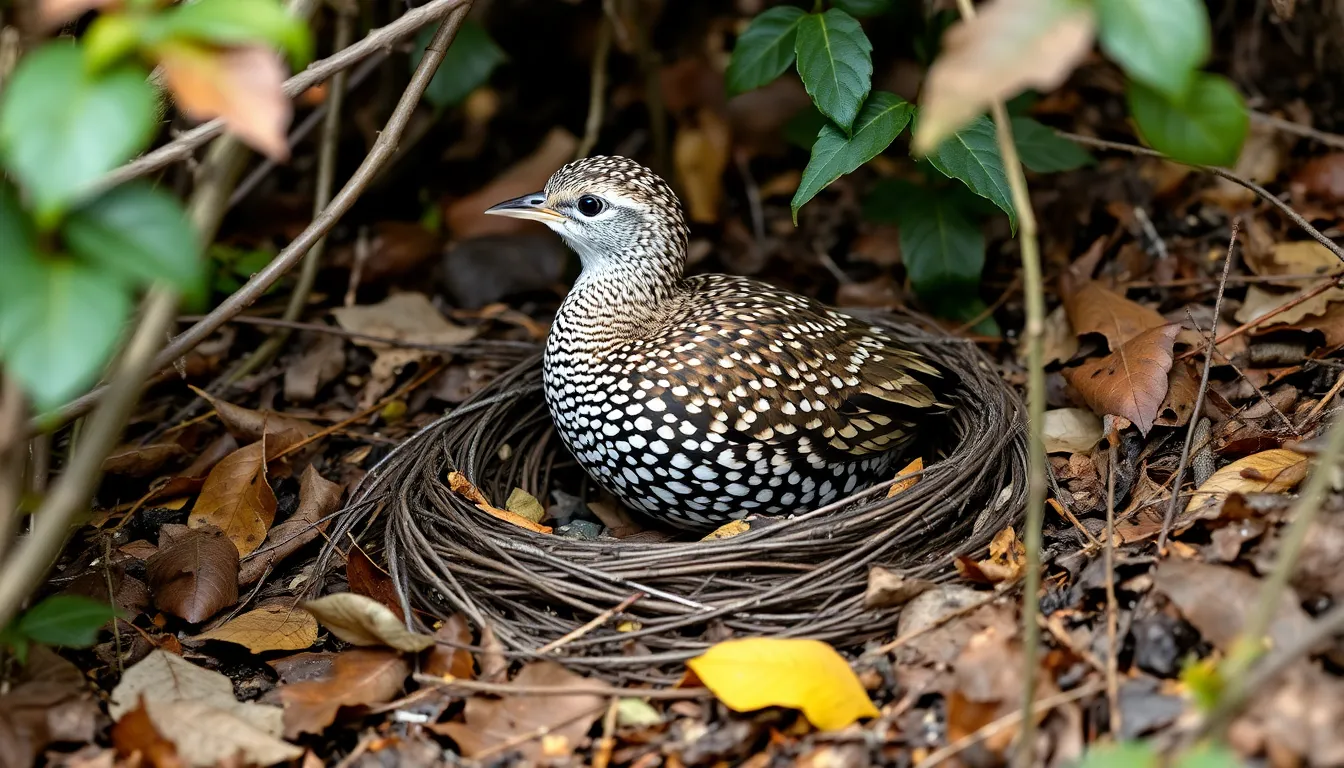
Woodcock breeding patterns reflect their secretive woodland nature through carefully orchestrated reproduction cycles. These remarkable birds demonstrate unique parenting strategies that maximize survival rates in their forest floor environments.
Nesting Habits
Female woodcocks construct shallow ground nests in secluded woodland areas between March and June. The nest consists of a simple depression lined with dead leaves, measuring 4 to 5 inches in diameter and positioned beneath overhanging vegetation or fallen branches. Optimal nesting sites feature young forest growth with dense understory cover, providing natural camouflage and protection from predators.
Females select locations within 150 yards of male singing grounds, ensuring proximity to established territories while maintaining adequate concealment. Nesting areas typically occur on slight slopes or elevated spots to prevent water accumulation during spring rains. The female’s mottled plumage renders her virtually invisible while sitting on the nest, blending seamlessly with surrounding leaf litter and shadows.
Egg Laying and Incubation
Woodcock females lay 4 eggs per clutch, with each egg measuring approximately 1.5 inches long and weighing 0.5 ounces. Eggs display a buff or pinkish background color marked with brown and gray spots that provide additional camouflage protection. The laying process spans 4 consecutive days, with one egg deposited during evening hours each day.
Incubation begins after the final egg is laid and continues for 20 to 22 days under the female’s exclusive care. Males provide no assistance during the incubation period, instead focusing on territorial defense and attracting additional mates. Females rarely leave the nest during daylight hours, typically departing only for brief feeding sessions during dawn and dusk periods.
Chick Development
Newly hatched woodcock chicks emerge as precocial young, covered in downy feathers and capable of walking within hours of hatching. Chicks weigh approximately 0.5 ounces at birth and display distinctive russet and brown striping that matches forest floor patterns. Their oversized feet and long bills become proportionally smaller as they mature over the following weeks.
Mother woodcocks lead their broods away from nest sites within 24 hours of hatching to reduce predation risks. Chicks begin probing for small invertebrates at 3 days old but rely on maternal guidance for locating prime feeding areas. Flight capabilities develop gradually, with young woodcocks achieving short flights at 14 days and full flight proficiency at 25 days of age. Family groups remain together for 6 to 8 weeks until juveniles disperse to establish independent territories.
Conservation Status and Threats
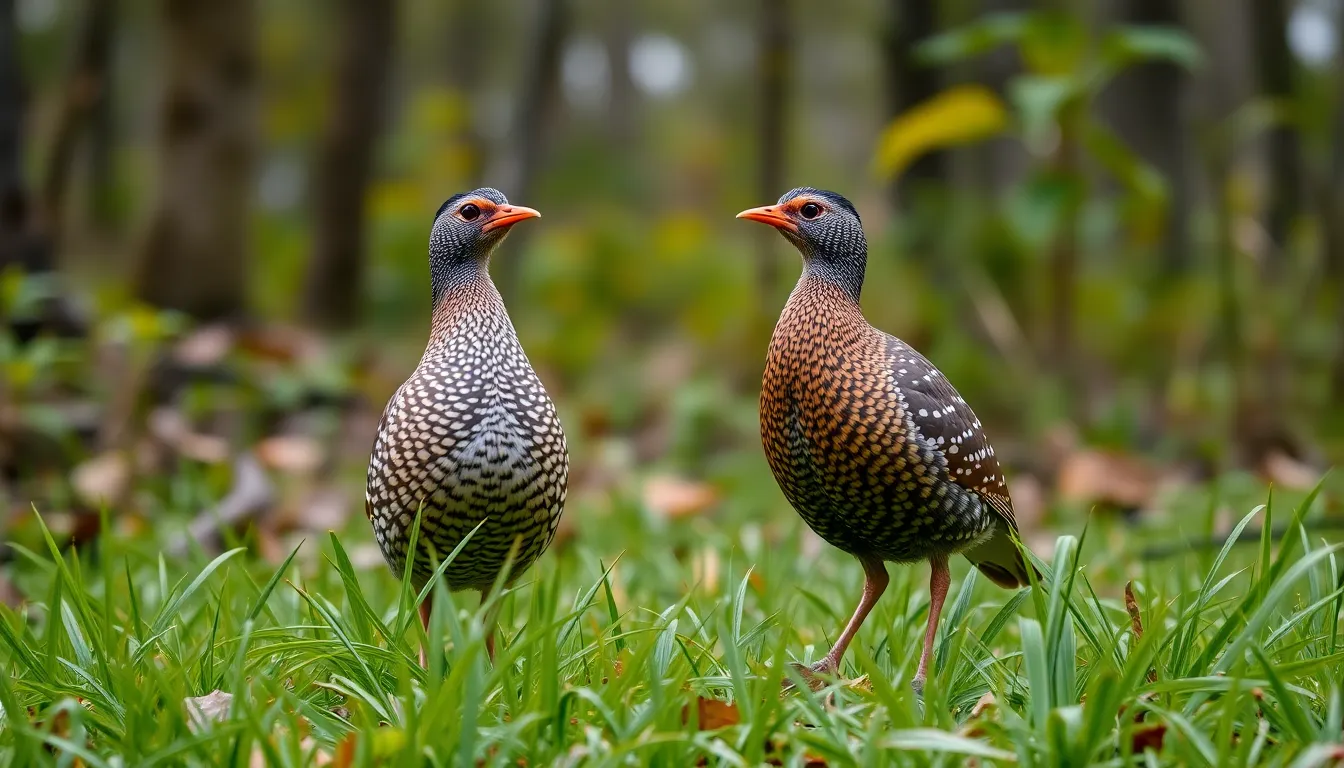
The American woodcock faces mounting pressures across its range even though remaining relatively stable compared to other game birds. We observe concerning population declines that threaten the long-term viability of this remarkable species.
Population Trends
North American Breeding Bird Survey data reveals woodcock populations have declined by approximately 1.2% annually since 1966. We’ve documented a cumulative population decrease of 46% over the past five decades across their breeding range. Regional variations show steeper declines in the Great Lakes states at 2.1% per year while southeastern populations remain more stable.
Current estimates place the continental woodcock population between 5.1 and 5.6 million birds. We track breeding populations through singing-ground surveys conducted each spring since 1968. These surveys indicate the steepest declines occur in traditional stronghold states including Michigan Wisconsin and Minnesota.
| Region | Annual Decline Rate | Population Change (1966-2019) |
|---|---|---|
| Great Lakes | -2.1% | -58% |
| Northeast | -1.8% | -52% |
| Southeast | -0.6% | -28% |
| Maritime Canada | -1.4% | -47% |
Environmental Challenges
Habitat loss represents the primary threat to woodcock populations across their range. We identify forest management practices that create large clearcuts and monoculture plantations as particularly detrimental to woodcock habitat quality. Urban development converts approximately 32,000 acres of suitable woodcock habitat annually in the northeastern United States.
Climate change alters precipitation patterns and temperature regimes that affect earthworm abundance and distribution. We observe earlier spring thaws that can expose nesting females and chicks to harsh weather conditions. Drought conditions reduce soil moisture levels essential for earthworm populations that comprise 60% of the woodcock’s diet.
Agricultural intensification eliminates edge habitats and wet areas where woodcocks traditionally forage and nest. We document pesticide use in agricultural areas that reduces invertebrate prey availability and potentially affects woodcock reproductive success. Forest succession creates mature stands with closed canopies that lack the dense understory cover woodcocks require.
Conservation Efforts
The Woodcock Management Plan guides conservation efforts across 28 states and 3 Canadian provinces through coordinated habitat management strategies. We carry out Best Management Practices that create young forest stands on 10 to 25-year rotation cycles. These practices generate approximately 150,000 acres of suitable woodcock habitat annually.
Federal programs including the Environmental Quality Incentives Program and Conservation Reserve Program provide financial incentives for private landowners to create woodcock habitat. We work with over 2,800 private landowners who manage 340,000 acres specifically for woodcock conservation. State wildlife agencies conduct habitat improvements on 45,000 acres of public lands each year.
Research initiatives monitor woodcock populations through banding studies that track survival rates migration patterns and breeding success. We band approximately 1,200 woodcocks annually to gather data on population dynamics and habitat use. Hunting regulations adjust season lengths and bag limits based on annual population assessments to ensure sustainable harvest levels.
Woodcock Bird Hunting and Management
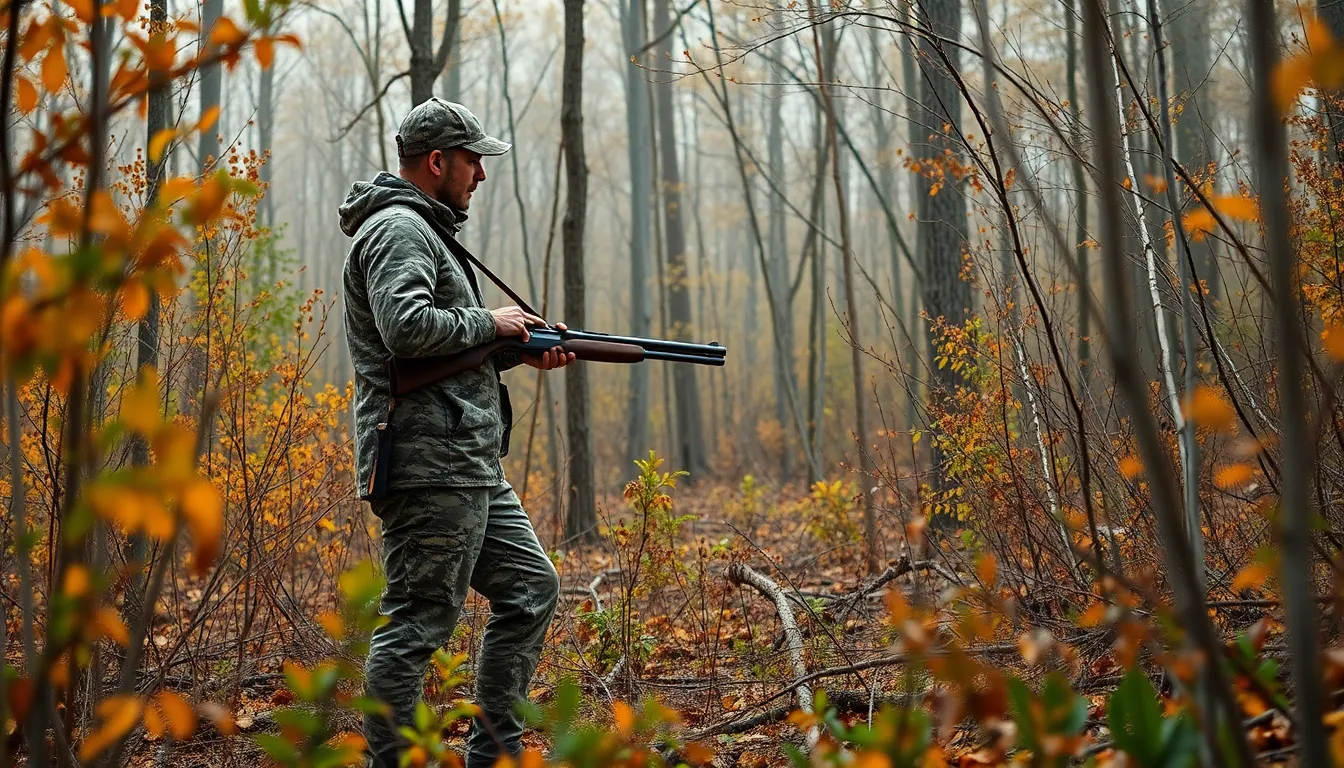
Woodcock hunting represents a cherished tradition across North America while serving as a critical component of wildlife management programs. Effective management strategies balance recreational hunting opportunities with conservation efforts to maintain stable woodcock populations.
Hunting Regulations
State wildlife agencies establish exact seasons and bag limits for woodcock hunting based on annual population assessments and breeding success data. Most states set daily bag limits between 3 to 5 birds with possession limits ranging from 9 to 15 woodcock. Hunting seasons typically run from October through January, coinciding with peak migration periods when birds concentrate in accessible areas.
Federal regulations require hunters to obtain migratory bird hunting stamps and comply with nontoxic shot requirements in designated areas. States mandate hunter education certification and valid hunting licenses before pursuing woodcock. Special regulations apply to certain Wildlife Management Areas where reduced bag limits or restricted hunting days protect sensitive populations.
Hunters must identify woodcock correctly to avoid accidentally harvesting protected species like rails or snipe. Legal shooting hours extend from 30 minutes before sunrise to sunset in most jurisdictions. Some states carry out point systems for hunting multiple game bird species, requiring hunters to select target species before each hunting trip.
Wildlife Management Practices
Habitat creation forms the foundation of successful woodcock management programs across their range. Wildlife managers carry out rotational timber harvests creating 5 to 25-acre openings that regenerate into ideal young forest cover within 3 to 5 years. These practices produce the dense understory vegetation woodcock require for nesting and feeding.
Prescribed burning removes excessive leaf litter and promotes earthworm populations in exact soil types. Managers target burn intervals of 3 to 5 years in designated areas to maintain optimal foraging conditions. Water level manipulation in managed wetlands creates mudflats and soft soils that support invertebrate communities essential for woodcock nutrition.
Alder management involves selective cutting and brush hogging to maintain diverse age classes of shrubland habitat. Young alder stands 1 to 15 years old provide optimal nesting cover while mature stands offer escape cover during hunting seasons. Managers coordinate timing of habitat work to avoid disrupting breeding activities from March through July.
Population monitoring utilizes the Singing-ground Survey conducted annually since 1968 across 1,500 routes in breeding areas. Banding operations capture migrating woodcock using mist nets during October and November, providing data on survival rates, harvest patterns, and migration timing. Wing collection programs analyze age ratios and reproductive success through examination of harvested birds’ wing feathers.
Conclusion
The American woodcock stands as one of our most fascinating woodland species combining remarkable adaptations with complex behaviors that continue to captivate researchers and nature enthusiasts alike. From their specialized feeding techniques to their spectacular courtship displays these birds demonstrate the incredible diversity of avian evolution.
We’ve seen how woodcocks have mastered life in dense forest environments through unique physical traits and behavioral strategies. Their success depends heavily on habitat conservation and thoughtful management practices that balance human activities with wildlife needs.
Whether you’re drawn to their mysterious nature incredible camouflage abilities or impressive aerial performances the woodcock offers endless opportunities for discovery and appreciation. These remarkable birds remind us of the intricate connections between species and their environments making them true ambassadors for forest conservation efforts across North America.
Frequently Asked Questions
What is an American woodcock?
The American woodcock, also known as the “timberdoodle,” is a secretive forest bird known for its remarkable camouflage abilities and impressive courtship flights. These compact birds measure 10-12 inches in length and weigh 4-10 ounces, with intricate brown and russet plumage that makes them nearly invisible against the forest floor.
Where do American woodcocks live?
American woodcocks inhabit diverse woodland environments across eastern North America, from southeastern Canada to the Gulf Coast states. They prefer young forests, forest edges, and mixed deciduous-coniferous woodlands with dense undergrowth. Moist soils rich in earthworms, such as alder swamps and wet meadows, are particularly attractive to them.
What do American woodcocks eat?
Woodcocks primarily feed on earthworms, which comprise 60% of their diet. They consume an average of 200 earthworms daily using a specialized “rock and probe” technique with their flexible, sensitive bills. They supplement their diet with other invertebrates like insects and larvae when earthworms are less available.
When do American woodcocks migrate?
Woodcocks migrate during October and November from northern breeding grounds to southern wintering areas, with peak activity in early November. Spring migration begins in February, with males arriving first to establish territories. Northern populations may travel up to 1,500 miles, while southeastern birds often remain year-round residents.
What is woodcock sky dancing?
Sky dancing is the elaborate courtship ritual performed by male woodcocks from March through June. This aerial display involves males spiraling upward 200-300 feet while making whistling sounds with their wings, then diving down while producing vocal chirps. These performances occur at dawn and dusk to attract females.
How do woodcocks reproduce?
Female woodcocks build shallow ground nests in secluded areas and lay 4 eggs per clutch. The female incubates eggs alone for 20-22 days. Newly hatched chicks are precocial, able to walk shortly after birth, and are led away from the nest within 24 hours to reduce predation risks.
Are American woodcocks endangered?
American woodcocks are not endangered but face population challenges. Their numbers have declined by approximately 1.2% annually since 1966, resulting in a cumulative 46% decrease over five decades. Habitat loss from urban development, forest management practices, and climate change are the primary threats affecting their populations.
Can you hunt American woodcocks?
Yes, woodcock hunting is legal and regulated across their range. State wildlife agencies establish specific hunting seasons, bag limits, and licensing requirements. Hunters must complete safety education courses and follow federal migratory bird hunting regulations. Hunting helps fund conservation efforts and provides valuable population data.
What makes woodcock eyes special?
Woodcocks have uniquely positioned eyes set high and back on their heads, providing nearly 360-degree vision. This exceptional eye placement allows them to detect predators from almost any direction while keeping their heads down to probe for food in the soil, making them incredibly well-adapted to their forest floor lifestyle.
How do woodcocks find earthworms underground?
Woodcocks use their specialized flexible bills equipped with sensitive nerve endings to locate earthworms. They employ a “rock and probe” technique, rocking back and forth while probing the soil. Their bills can sense vibrations and movements underground, allowing them to pinpoint and extract earthworms with remarkable precision.

